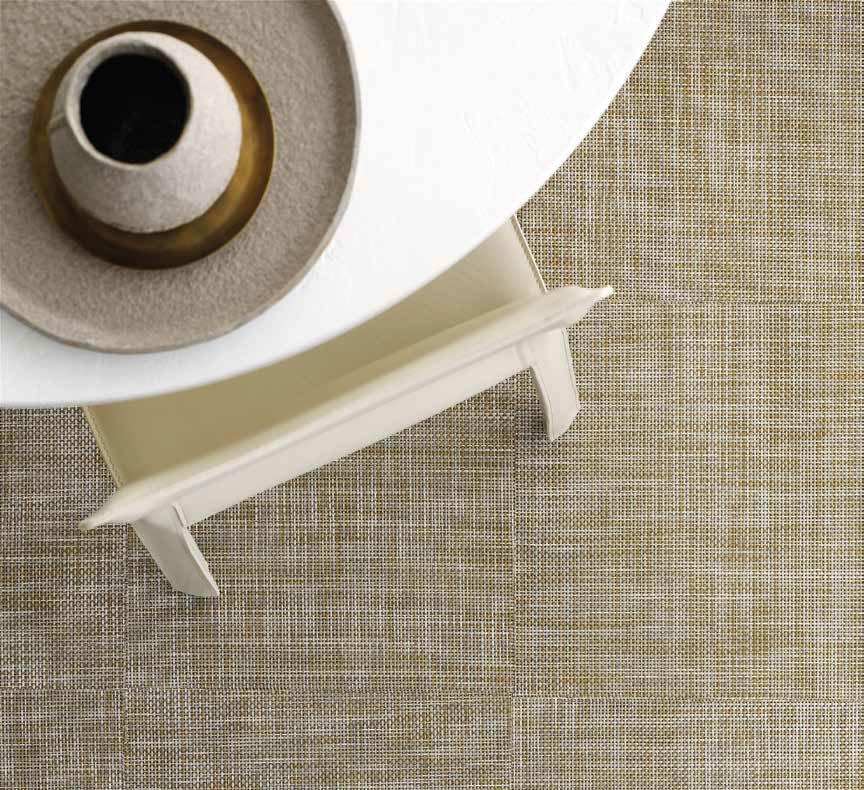FLOORING AND CARPET OPTIONS BRING STYLE TO THE SURFACE
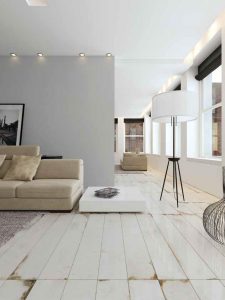
UNDER FOOT
BY LISA CARTON
Your style, that sense of what’s “right,” design- and color-wise, is reflected wall-to-wall throughout your home. It’s evident in your choice of furniture, your selection of artwork, in the lighting, and more, and that style lives and expresses itself from room to room, indoors and out.
It’s only natural that your personal aesthetic would drive your flooring choices and impact your home’s interior beauty, its design, décor, comfort, livability, and upkeep. A spectacular floor—whether made of artfully painted wood, stately houndstooth tiles, or a stained concrete—will catch your eye at every step.
TILE
LET YOUR IMAGINATION RUN TILED
Tiles have an illustrious history; we have samples of early clay and mud tiles from 7,000 years ago, with decorative tiles found in Egypt dating back to 4,000 BC.
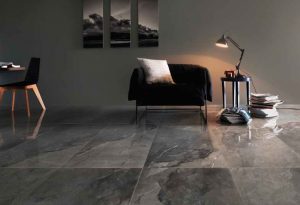
“Today, tiles can be both affordable and luxurious for everyone, and the design possibilities are endless,” says Leah Wynn of Inside Out Architecturals in Salt Lake City. Passionate about tile, Wynn has been working in tile layout design and installation for the last 20 years, and has brought handmade, glass, porcelain, and yes, even leather tiles to the valley.
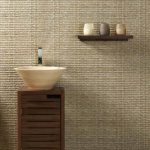
“Homeowners are now discovering that if you want wood floors, or perhaps you desire a rustic treatment for your walls, you can utilize natural wood tile or porcelain planks that look just like the real thing,” Wynn explains. “We carry a tile that combines porcelain tile and glass into a product that resembles aged wood, while containing 85 percent recycled material. There’s also texture in it. You almost have to touch it to know it’s different.”
TODAY’S ADVANCEMENTS
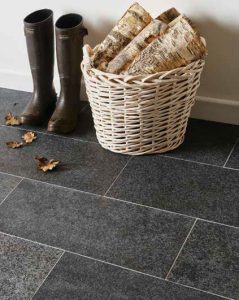
Over the last few years, many innovations have revolutionized the tile industry. Ink-jet technology is utilized to achieve authentic stone appearances or very refined, intricate designs. Computers, machines, and robotics do most of the work. “The print quality they can put on floor tile actually resembles stone or wood. The ability to create beautiful patterns and textures for a feature wall or focal point is amazing.”
Wynn notes, “The industry is seeing an explosion of sizes, shapes, materials, and patterns.” Particularly popular these days, she adds, are large-format tiles—tiles that come 12” x 24” and even 36” x 36”—as opposed to the tried-and-true 12” x 12”. “Tile trends through next year will continue to include more texture and dimension that has a 3D wave pattern or a bamboo texture running through it.”
Wynn adds, “Leather tile is also being used more frequently for wall and floor installations, bringing a quiet, comfortable, masculine elegance to many spaces. Floors are becoming focal points with tile, creating an interesting shift in where one’s eye goes in an architectural space.”
Some European tile manufacturers are proactive in using recycled materials and taking other measures to preserve the environment, Wynn points out. “People are switching over to tile not just for its appearance, but also because it’s green, and virtually maintenance-free, plus it’s much, much easier and cost-effective to install and heat for that warming effect. Who wants cold feet in the bathroom?” The benefits of tile abound, and designers know it. Using tile also is cooler in the summer months, and is a great benefit for those who suffer from dust-related allergies. Tile is also resistant to fire, moisture, odor, and fading.
Wynn says tile is now becoming a first choice in the design process. “In the kitchen, it’s a glass tile backsplash and tile for the entire floor, or a panel in a shower,” she says. “In the entryway, one might choose an intricate pattern or mosaic tile that can be created for that dramatic first impression.”
TILE TRENDS
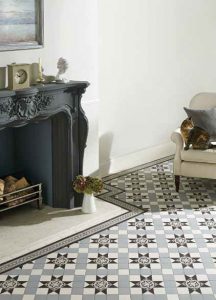
With color, says Wynn, “We’re seeing some more bright colors coming to the mix in feature tiles like marine blues and greens. If you crave a more subtle palette, we’re seeing those popular grey tones being warmed up a bit with some warm brown and taupe splashes within the material.” Each year the industry tends to pick a pattern favorite. Last year Wynn points to the Hexagon. This year, she says, you’ll see a surge in Chevron and the “brick” patterns. “Sheen also makes a return,” adds Wynn. “From shiny glass and metal tiles to beveled mirror tiles and brightly colored ceramics. The ‘bling’ is back in vogue this year. All you need is your imagination.”v
Nate Brown of the Summit Source in Salt Lake City has seen many of these trends and more. With a swing towards modern and industrial, Brown says, “We are seeing finishes that emulate industrial surfaces such as metal or concrete.” And often, Brown says, homeowners and designers are mixing styles. “We’re also seeing some Old World styles re-emerging. The juxtaposition of the two styles makes for some very cool spaces, which I’ve been seeing more and more in magazines, and on Pinterest and Houzz.”
CONCRETE
AS MUCH ART AS SCIENCE
Trendy, sleek, and durable as time itself, concrete flooring jumped from bare-bones utilitarian to chic in a New York minute. Thanks to a multitude of available colors, textures, and finishes, concrete can adapt to almost any décor.
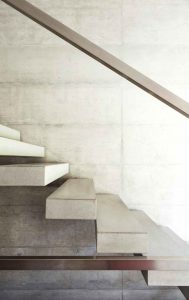
It’s not just for sidewalks—concrete is a stylish choice for indoor floors. “Its surface can be finished in various ways—with colors, stains, and aggregates—and given a textured feel or buffed until glassy,” says Justin Peterson, co-owner of Cardinal Coatings in Salt Lake City, whose popular company has been in the valley for 40 years. “These floors are extremely durable and easy to clean,” he explains, “and they resist water when properly sealed.”
Concrete also works well with radiant heating, with the surface absorbing heat, and that translates to cutting energy bills. They’re warmer in the winter, cooler in the summer.
CONCRETE IS GREEN
Concrete is good for the earth. Really. Concrete doesn’t deplete natural resources, requires less energy than other floor types to produce, and is made and poured locally. “It’s good for indoor air quality because it inhibits mold, mildew, and odors, contains no potentially harmful VOCs, (volatile organic compounds), and can be finished with zero-VOC sealers,” explains Cardinal Coatings co-owner, Kip Slaugh. “Concrete can be recycled, and the surface cuts down on the need to discard waste, such as scraps of flooring and underlayment.”
Concrete withstands wear, and it’s resistant to fire, stains, water, bacteria, and odors. It won’t scratch, it’s easy to clean, and the design is customizable. What more could you ask?
TO COLOR OR NOT TO COLOR
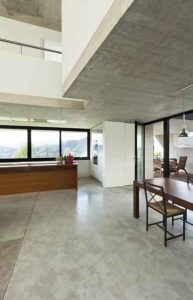
Another option to consider is adding color to the floor. “Special stains with chemicals that react to the lime in concrete can be painted or applied to the floor to make intricate designs to any client’s specs,” says Slaugh. Staining the concrete, in combination with scoring, can produce elaborate patterns and designs. “This can be incorporated into the mix at pour stage, in which case you’ll need to think about your color selection early on. If you wait and add color later, you can use water-based dyes or acids,” he says.
There are many choices for the final finish and look of your concrete flooring. High-gloss or matte looks can be achieved according to preference. There are also many different levels to the concrete floor ‘polish.’ “It all depends on personal taste and budget,” Slaugh continues. For residential or commercial uses, polish can be customized. Peterson adds, “We can polish concrete to a high sheen, or even transition your warehouse concrete from a smooth surface indoors that meets exacting flatness standards, to a pebbled outdoor surface that is ideal for safety on your cold outdoor loading dock.”
THE WARMTH OF CONCRETE
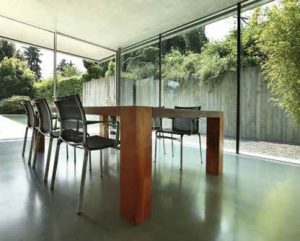
Although we traditionally think of concrete as a ‘cold’ material, if used with access to direct sunlight, it can act as an effective thermal mass, meaning, “it absorbs heat, stores it, and then slowly releases it over the rest of the day and into the night in a way that wood or carpet can’t,” says Peterson. This is why many solar passive houses have concrete floors. Of course, concrete can ‘look’ cold, but it can easily be warmed up by teaming it with warmer-looking materials.
There was a time when having an exposed concrete floor might have prompted your friends to chip in and buy you a carpet, assuming that you couldn’t afford to buy one yourself. How times have changed…
WOOD
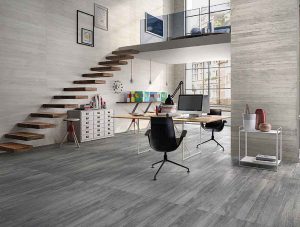
WORRY-FREE HOME DÉCOR
When you talk with Nate Brown of Summit Source in Salt Lake City, you’re immediately put at ease by this expert in all things flooring. After all, you’re making big decisions when it comes to what you’re putting in your home. “There are many worries when it comes to decorating your home. Will it look beautiful? Will it last? Will it be comfortable? When you are planning a project, big or small—these questions are bound to pop up,” says Brown, who has assisted home and business owners in the valley in taking the worry out of the design process for over 10 years.
WILL IT LAST?
How can you make sure your new décor will hold up? First, Brown stresses the importance of being honest with yourself about your lifestyle. “If you have rambunctious kids and pets, you probably want to steer clear from all-white.” You can, however, find beautiful products that are durable and stain-resistant. Choose flooring products made of materials that resist spills and messes, as well as products with long-term warranties.”
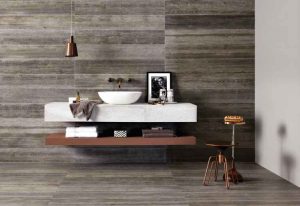
Brown notes that the trend toward modern contemporary flooring continues to be very popular. “People are utilizing engineered hardwood floors which have a very strong appeal, and they really are indistinguishable from real wood. Builders also seem to prefer the pre-finished floors because it keeps a project on schedule, and the home doesn’t need to be shut down for the lengthy sanding and staining process.”
WARM-TONED GRAYS STEAL THE SHOW
Brown says the color gray’s popularity for wood flooring will remain strong in 2016. “This year, we’ll begin to see grays take on some warmth with brown undertones. This creates a comforting and versatile base that coordinates with a number of different color palettes and personal styles.”
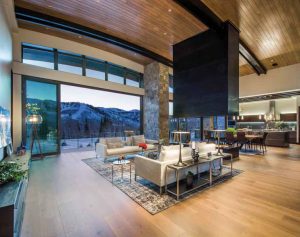
RUGS
BEYOND BEIGE CARPET
When the choices in carpet were limited to basic beige, designers treated it more often than not as a neutral background for room furnishings. Now, with numerous textures, patterns, and colors available, carpet is emerging as the focal point in some interior designs.
“We’re seeing more texture and patterns and even flecks of color adding interest to basic backgrounds,” says Brown. “Also, variations in height and sculptured effects offering a bolder look.”
He also sees a trend in homeowners spending less on square feet and more on the interiors. “They’re not so much in to size of the home, but the finishes. They want to see and use materials that their neighbors don’t have and that are different.”
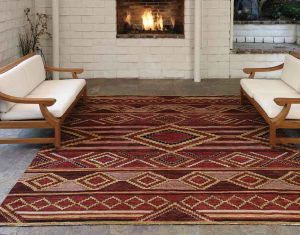
DREAM WEAVERS A RUG EXPERT KEEPS AN EYE ON THE FLOOR
Good rugs are the cornerstone of great interiors and can be an earth-shattering statement piece or a neutral element that pulls the entire design together. They come in endless varieties, with excellent contemporary rugs as well as antique pieces that are not only of superb quality but have the potential to appreciate in value.
“A rug may be considered an accessory, but it can be the foundation of a gorgeous space,” says Somia Bashir, manager of Utah Rugs, based in Salt Lake City. The 11,000-square-foot gallery has been in business for 40 years and has the largest inventory of new, antique, and vintage rugs.
The art of fine rug making is a process that has been practiced and perfected by a variety of people over hundreds of years. “We carry rugs from India, Iran, Pakistan, Turkey, Afghanistan, Romania, and we even have authentic Navajo rugs. They are all hand-knotted, made with superior quality wool and organic or vegetable dyes.
FLOORING 101
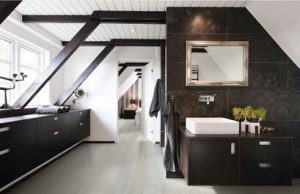
So many flooring choices, so little time to research which looks good, feels good, and lasts. “Flooring is a personal and creative choice,” says Lisa Laswell of Topmark Floor and Design in Park City, Utah. “That choice has to be approached with careful planning, attention to detail, and proper installation.”
INSTALLATION
“The biggest factor when considering your flooring is not the product you ultimately choose, but its the install. You can have the best carpet, you can have the most wonderful hardwood floors, or tile that came all the way from Italy, but none of that will matter if it’s not installed right.”
Laswell stresses that Topmark employs their own installers. “We don’t contract out the work. Our experienced installers have full knowledge of the job and what it takes to complete it, along with complete follow-through.” On the flip side,” she continues, “You can have a medium level product that is not the most expensive, but if the install is done right, and a there’s a lot of attention to detail, it can look just as fantastic as something that costs three times as much.”
PLANNING
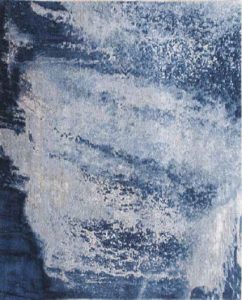
“I try to tell clients to get as much education, knowledge and plan ahead as much as you can”, continues Laswell. “Think ahead for forced air or heating vents, molding, or radiant heating , all details that will affect your flooring install, and have that built in to your budget.”
Laswell also cautioned to be realistic with time lines. “Just because you’ve seen it online or in a magazine, doesn’t mean it can be ordered and installed in a week’s time.”
WHAT IS LVT AND LVP?
Laswell points out that LVT, Luxury Vinyl Tile, or LVP, Luxury Vinyl Planking, is the single material that has taken off in the last two to five years. “It’s not a trend, but a beautiful, practical, and functional flooring option that really is timeless.”
“LVT, Luxury Vinyl Tiling, is the perfect choice over natural stone and ceramic tile. Its durable engineered stone construction, groutable, and easier installation than real stone,” Laswell says. “It’s also warmer to the touch and more comfortable under foot than ceramic tile.”
LVP, Luxury Vinyl Planking, offers the natural beauty of hardwood and stone in a waterproof floor that will stand up to high traffic. “LVP installs anywhere in your home, including base-ments”, says Laswell. “You can choose wood designs in authentic plank lengths, and widths or natural-stone styles.”
“There really are endless flooring options, but it’s amazing when people come in stuck with just one idea in their head, but after a bit of education and direction, I’ll hear them say, ‘I never thought of that.’”
Because the dyes are mixed by hand each time, each rug is guaranteed to be unique,” says Bashir.
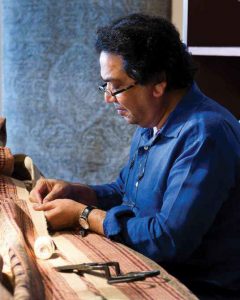
“A rug is a piece of artwork,” says Bashir, and added that it’s hard to overestimate their stylistic contributions. “All our rugs are handmade from traditional to transitional and contemporary design, with sizes ranging from small to over-sized carpets, rounds, ovals, squares, or hallway runners.” Bashir explains that often these handcrafted timeless collectibles are passed on to generations as memorabilia and preserved in their truest form.
Utah Rugs is also a large supporter of the non-profit organization, “Care & Fair,” dedicated to educating underprivileged children to combat child labor. “None of our rugs are made by children,” stresses Bashir.
The gallery also has an on-site repair department headed by renowned master rug weaver Hamid Bashir, who has half a century of weaving and repair experience. They are the only Utah rug company with a full, in-house cleaning facility using environmentally non-toxic herbal shampoos, with state-of-the-art dusting and drying machinery.
“Often, rugs are the more limiting piece when it comes to pattern, color, and what fits into your budget, so you may want to start with the rug design and move on to the fabrics and paint from there,” says Bashir. Some designers say an area rug should be the “soul of your room,” and the “color scheme, furniture placement, and accessories should all connect back to it.”
Some owners will even display rugs on the wall or drape them over a table or a bannister. But Bashir points out that the rugs are meant to be walked on. And, don’t tread lightly. “Despite their beauty and value, these rugs are meant to be underfoot. The more they’re walked on, the tighter the weave becomes.” Just like a fine wine, they get better and more valuable as they age.
